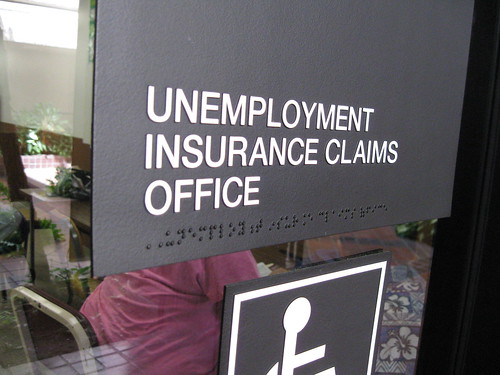Stagnant Employment Levels-
One of the most common complaints when an economy begins to turn the corner and pull out of recession goes something like this: ‘If things are getting better, why does it still hurt?’
People read the news about a recovery, and wonder why they still can’t find work. As with many things in life, a jobs recovery takes time. Economists refer to the unemployment rate as a lagging indicator, which means it follows broader moves in economic activity with a time delay, typically of a few months. Although it’s little consolation for the desperate job seeker, there are good reasons why this is so. Understanding this doesn’t ease the pain of joblessness, but it can make forward planning a little easier when you understand that the jobs recovery is around the next corner.
Batten Down The Hatches
 When economists talk about recession they use a rather dry technical definition that doesn’t always match the experience of individuals in the labour force. To an economist, a recession comprises two consecutive quarters of negative GDP growth. That is to say the Gross Domestic Product, the total sum of all economic activity of the economy in question, falls for 6 months (two quarters).
When economists talk about recession they use a rather dry technical definition that doesn’t always match the experience of individuals in the labour force. To an economist, a recession comprises two consecutive quarters of negative GDP growth. That is to say the Gross Domestic Product, the total sum of all economic activity of the economy in question, falls for 6 months (two quarters).
The good news about unemployment being a lagging indicator is that employers usually try to weather the storm when recession hits. Even after the requisite two quarters of decline have passed, businesses generally continue to hope the downturn won’t last too much longer and won’t be too deep. Sales may drop, some customers walk away, but the business will try to hold on to staff.
After all, the staff are a major investment and asset. They cost a lot to recruit and train, and their experience and abilities are what keep the revenues rolling, so employers will usually wish to keep them in place for when conditions pick up again. Of course, there’s also an undeniable human factor. Whilst it’s easy to look at the numbers and decide a change of approach is needed, it’s much harder, especially for small workforces, to let members of the team go. Call it optimism, compassion, or a lack of responsiveness, layoffs are usually a last resort.
Creative Destruction Takes Time
However, if the recession is particularly deep or prolonged, lay-offs become increasingly necessary to reduce operating costs and ensure the business stays afloat. Hence, as the lay-offs follow a few months after the onset of the recession, they are seen to lag the main economic indicator, the GDP rate.
In difficult times some of the less viable companies are also ‘shaken out’ of the market and in ceasing to operate their entire workforce is made redundant. Maybe the management was poor, or the business dealt in goods or services that do well in boom times, but which consumers cease to buy when cash is tighter. Economists refer to this effect as ‘creative destruction’, where less profitable enterprises cease trading, meaning investment and resources can be re-allocated to other areas. In theory this helps the economy to recover, as investors seek new opportunities, entrepreneurs try new ventures and workers look for new positions or try self-employment.
Looking at the far end of the recession, when GDP growth resumes and consumer confidence begins to return, businesses will once again see their revenues rise. Increasing sales and profits don’t immediately lead to new hiring, though. The tendency is for longer hours for the remaining staff in the case of established businesses, and new start ups are still consolidating. It takes a few months for business confidence to return, and for new staff to be taken on. As in the case of lay-offs lagging the start of recession, new hiring lags the start of the recovery.
Whatever the cause of the recession, be it a typical business cycle, the bursting of a speculative bubble, or repressive Government regulations, the processes of creative destruction and innovation will reinvigorate the economy if they are allowed to.
See Also:
- What is the Real Unemployment Rate?
- Employment vs. Unemployment
- What Is U-6 Unemployment?
- Is the Government Fudging Unemployment Numbers?
- Highly Skilled Worker Shortage in a Recession?
- Networking to Find a Better Job
About the Author:
Will Kerr writes on a wide range on employment issues, from the wider, macro-economic context affecting the market, to the small details that can determine the success or failure at interview. For a whole host of employability tips, visit www.job-centre-vacancies.co.uk
Photo Credits: By Bytemarks
